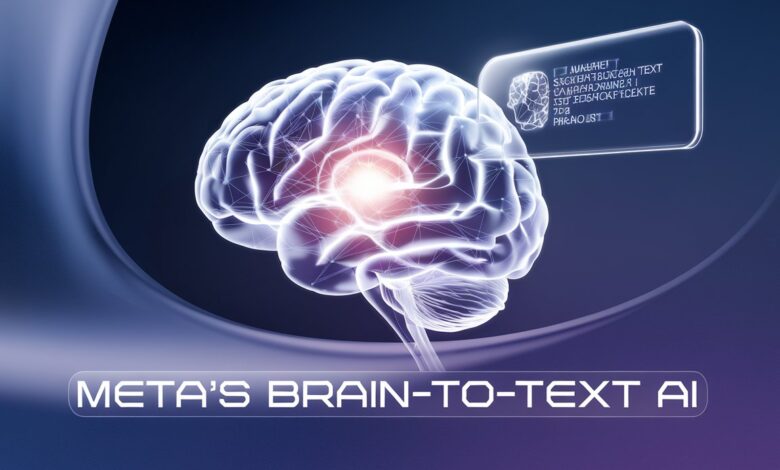
Meta’s Brain-to-Text AI
In a groundbreaking development, Meta has unveiled its cutting-edge Brain2Qwerty AI system, capable of translating thoughts into typed text with an impressive accuracy of up to 80%. This innovation represents a monumental step forward in brain-computer interface (BCI) technology, blending neuroscience with advanced artificial intelligence. While the technology is still confined to laboratory settings, its potential to transform human-computer interaction is undeniable.
The Science Behind Brain2Qwerty
At the core of Brain2Qwerty lies a sophisticated process that captures neural activity using magnetoencephalography (MEG) and electroencephalography (EEG). MEG, a pivotal tool in this research, detects magnetic signals generated by brain cells as they process thoughts. By taking 1,000 snapshots of the brain per second, the system identifies the precise moments when thoughts are converted into words, syllables, and characters.
The AI model is trained on thousands of characters typed by volunteers, enabling it to map brain signal patterns to specific keystrokes. This results in the generation of on-screen text that mirrors the user’s thoughts with remarkable accuracy. Notably, MEG recordings outperform EEG systems, achieving twice the accuracy in decoding brain signals.
Current Challenges Facing Brain2Qwerty
Despite its promise, Brain2Qwerty faces several critical challenges that limit its practicality:
- Size and Cost: The MEG scanner, weighing half a ton and costing around $2 million, is far from accessible for everyday users.
- Portability Issues: The equipment’s refrigerator-like size and the need for a magnetically shielded room restrict its deployment to controlled laboratory environments.
- Sensitivity to Movement: Even slight head movements can drastically reduce accuracy, requiring users to remain perfectly still.
- Controlled Environment: The system’s reliance on a specialized environment further highlights its current limitations.
These hurdles underscore the need for significant advancements before Brain2Qwerty can transition from the lab to real-world applications.
Unlocking the Potential of Brain-Computer Interfaces
Brain2Qwerty’s capabilities open up a world of possibilities, particularly in the medical field. For individuals with conditions like locked-in syndrome or severe neurological disorders, this technology could restore the ability to communicate. Beyond healthcare, it offers valuable insights into cognitive neuroscience, advancing our understanding of how thoughts are translated into language.
Future applications may include assistive devices for individuals with physical limitations, enabling seamless communication and interaction with technology. As Meta continues to refine this innovation, the integration of AI and neuroscience promises to reshape how we interact with machines.
What’s Next for Brain2Qwerty?
To make Brain2Qwerty more practical for everyday use, several advancements are necessary:
- Miniaturization: Reducing the size and cost of MEG scanners is crucial for portability and accessibility.
- Improved Accuracy: Enhancing the system’s ability to decode brain signals across diverse users will ensure broader applicability.
- Dynamic Environments: Developing solutions to maintain accuracy in non-laboratory settings will be a game-changer.
Meta’s investment in this field signals a strategic push toward revolutionizing human-computer interaction. While widespread adoption may still be years away, the progress made so far offers a glimpse into a future where technology seamlessly integrates with our thoughts.
Why This Matters
Meta’s Brain-to-Text AI is more than just a technological marvel; it’s a testament to the potential of combining AI with neuroscience. As we stand on the brink of a new era in BCIs, the possibilities for innovation are endless. From restoring communication for those who’ve lost their voice to creating entirely new ways to interact with technology, Brain2Qwerty represents a bold step forward in realizing the full potential of human-AI collaboration.







